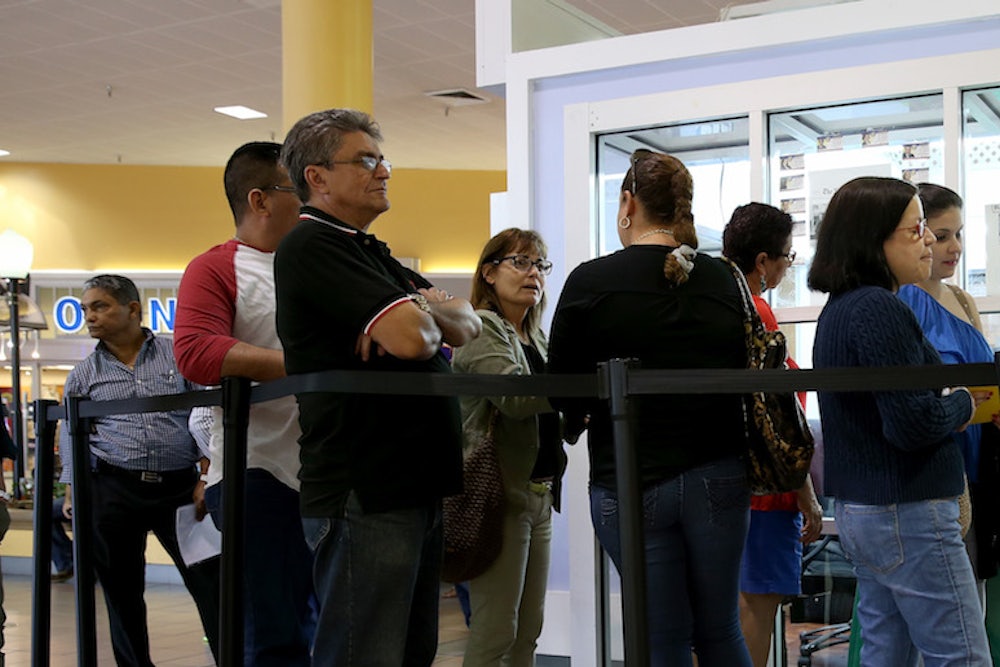More than 6 million Americans have signed up for private insurance through the Affordable Care Act's new marketplaces, the Administration announced on Thursday. And it appears that the rate of sign-ups is reaching new peaks.
The total passed 6 million sometime on Wednesday, according to officials, which means that about 1.75 million have selected an Obamacare plan in March. And the month is not yet over. Average daily enrollment works out to about 70,000, given the method the Department of Health and Human Services uses for accounting. The average daily enrollment in December, when people were rushing to get coverage in time for January, was about 63,000.
Officially, people still have a few more days to get coverage. Unofficially, they have at least another week or two, thanks to a new grace period that the Administration announced on Tuesday. Even with that extra time, the total number of signups by late March probably won’t reach the original projection of 7 million. And, based on anecdotal reporting, something like one-fifth of people signing up for insurance won’t pay their premiums right away. They won’t really have coverage.

Even so, the number of people who have insurance should be more than 5 million and, depending on the final figures, somewhere close to 6 million. That’s precisely what the Congressional Budget Office predicted recently, after taking account of the website problems and the effect they would have on enrollment.
As usual, these raw numbers leave many important questions unanswered. Nobody knows how many of these people had insurance before and, if they did, what kind of insurance it was or how much they were paying for it. And the national figure for enrollment doesn’t say much about state-by-state breakdowns, which is critical, because every state has its own insurance market. In any given state, poor enrollment could lead to higher prices next year.
Nor do the enrollment figures say anything about how easily people are getting insurance—or what they think about the coverage after they have bought it. You don’t have to look hard to find anecdotes of people angry about the limits or cost of their new policies, not to mention those still struggling with bureaucratic application issues. (I just heard one today, about somebody who said she had spent four hours trying to deal with the call center.)
But it also isn’t hard to find stories of people grateful to get insurance that, for the first time, is available to all Americans regardless of pre-existing conditions. Nor is it difficult to find people grateful that they can finally afford coverage, thanks either to newly expanded Medicaid programs or the financial assistance—worth, in some cases, thousands of dollars a year—through the marketplaces.
And the fact that enrollment will probably be close to the original projections suggests that the law is working more or less like it's supposed to work. Whether that's good or bad, obviously, is a matter of opinion. Most readers are familiar with mine.
Note: This item has been updated. Also, to keep tracking enrollment in real time, I highly recommend (again) checking out ACASignups.net. The predictions of Charles Gaba, who runs the site, have proven remarkably accurate.
